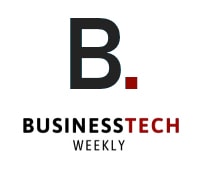Why Workplace Productivity Apps Are Adopting Gen Z Design Language

Great design goes beyond appearances. It helps people learn tools quickly and want to keep using them. As younger workers reshape workplace culture, companies are updating tools to keep teams engaged and productive. The idea is to blend fun with function, meeting the demands of a new generation.
This article looks at how workplace apps are taking cues from the habits and working styles of Gen Z.
On this page:
Gen Z’s Influence on Workplace App Design
Gen Z makes up over 69 million Americans, or 20 percent of the U.S. population. Born between 1997 and 2012, they have grown up in a tech-saturated world. This has made them digital natives with a strong preference for intuitive, smartphone-friendly interfaces.
Their familiarity with social apps like TikTok and Snapchat shapes their expectations for workplace tools, favoring designs that are visually engaging, customizable, and easy to navigate.
This demographic shift is pushing companies to adopt Gen Z-inspired design language, ensuring apps align with their tech-savvy habits to boost engagement and productivity in modern workplaces..
Characteristics of Gen Z Design Language
Gen Z design language prioritizes bold, vibrant aesthetics and intuitive functionality inspired by social media platforms.
Key elements include vivid color palettes, dynamic animations, and minimalist layouts that emphasize clarity and ease of use. Customizable interfaces, such as drag-and-drop dashboards with personalized themes, icons, or widgets, create a sense of ownership and familiarity.
Playful features like animated transitions, emoji-based feedback, and micro-interactions (like hover effects or progress bars) are a popular choice. It mirrors the engaging, gamified feel of apps like TikTok.
Mobile-first design is a must-have aspect, with touch-friendly controls and responsive layouts. This is because 95 percent of Gen Z own a smartphone.
These elements reduce the learning curve, making workplace tools feel like a natural extension of Gen Z’s digital lifestyle, fostering engagement and efficient collaboration.
The Line Between Fun and Too Much
Gen Z design makes apps fun, but it can tip into distraction. Features like endless scrolling, streaks, or constant notifications, straight out of social apps, can sneak into work tools, making it hard to stay focused.
Apart from alerts, many design tricks are meant to keep people hooked, hurting productivity and mental health. In fact, the impact of social media algorithms is so deep that it has turned into a legal issue.
For instance, the recent Snapchat lawsuit points to harm from designs that push compulsive use, especially among the younger population. This is because social media companies make more profits when there is higher engagement. Cases like this are nudging companies to rethink features that might cross ethical lines.
TorHoerman Law notes that individuals and parents with Gen Z kids who may be negatively affected can check if they are eligible.
Workplace app makers, who take design and UX cues from these social media and gaming apps, can make note of this. They can check if the features help people work or just keep them glued to the screen.
How Work Apps Are Getting a Gen Z Makeover
Apps like Notion, Slack, and Figma are picking up Gen Z’s style to make work more engaging. They’re adding fun stuff like stickers, emoji reactions, background music, or animated loading screens that feel less like corporate software.
Notion lets workers customize their dashboards with colors and icons, while Slack’s playful gifs mimic texting vibes. Similarly, Figma’s easy-to-use design invites collaboration, boosting user retention.
A 2024 Fortune article notes that Gen Z wants workplace apps that are user-friendly, simple, and snappy. These changes make work apps easier to pick up, especially for remote teams who need tools that don’t feel like a slog.
By mixing fun with function, companies are making sure their software fits how Gen Z already uses tech, keeping everyone on board and productive.
Designing for the Long Haul
Gen Z’s design preferences aren’t just a phase, but are shaping the future of workplace productivity apps. By 2030, they’ll be 30 percent of the workforce, becoming a force to reckon with.
According to a 2024 Deloitte survey, 65 percent of Gen Z prefer companies to be ethical with technology use. Borrowing ideas like smooth animations or personal dashboards makes sense, but companies need to skip the manipulative stuff, like spammy notifications.
That means clear options and accessible designs. Building apps that people love to use, not have to use, will keep teams productive and loyal for years.

